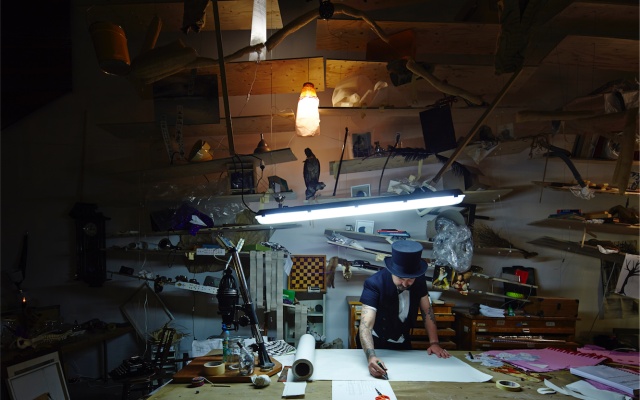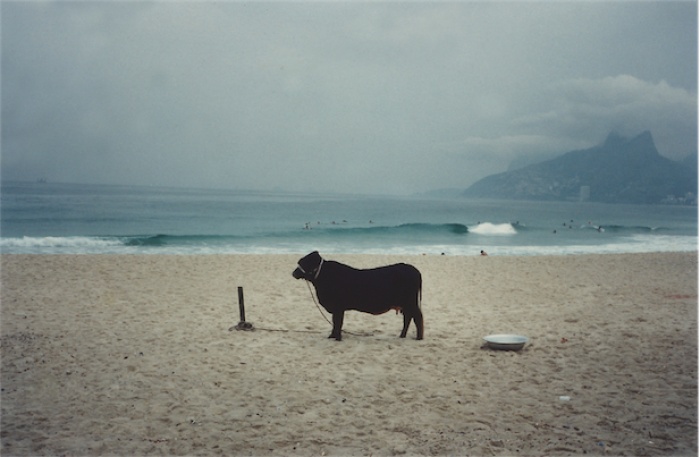
Laura Lima, Krowa. Dzięki uprzejmości artystki
Agnieszka Sosnowska: Your work with living beings started with an animal, not a human. I find it meaningful.
Laura Lima: The idea of working with human beings is definitely the starting point for my practice. At that time, I was thinking about living beings and how to construct an image of them. When I realized this I had to think about a structure and a way to approach this issue – a kind of philosophy of how to do it. Strangely enough, I decided that the first work in this direction, which became the first of a larger group started in the 1990s called Man=flesh/Woman=flesh, was going to be made with an animal, a cow. In 1994 I brought a cow to Ipanema beach in Rio de Janeiro. Ipanema is an urban beach in the middle of a hectic city so you can imagine that probably for at least one hundred years nobody had seen an animal there. It was very simple and not problematic to bring the cow to the beach and leave it there for one day. This was a breakthrough, and paved the way for the works that are part of Man=flesh/Woman=flesh and that feature mostly humans. To me the equation was an act of equalizing Men and Women (in capital letters) with mere flesh (with a small “f”). Man=flesh/Woman=flesh, more than a title for a group of works, is a strategy that dictates the way that the work should be constructed and presented. It is a very short, but dense, philosophical structure, and the works expand it without words but with an image that goes on and on.
The thinking about animals has changed a lot since 1994. Nowadays it would be much more complicated to carry out this piece. We live in a time where notions of will and agency are about to change radically. Perhaps the difficulty of doing this piece nowadays speaks of the same issues that were implicit when the piece was made, but in a different way. The beauty of the formula Man=flesh/Woman=flesh is that it contains the potentiality of all the pieces. It is not just a title. It is important to keep thinking about how my the work has developed over the last two decades. Its present difficulty raises questions such as: What is this idea of living beings exactly? How does our attitude towards it change with time? Since the beginning, the construction of each piece implied an ethical architecture. Since I was working with instructions for humans, it was interesting to start off with animals, and what does “instructions” imply in this case.
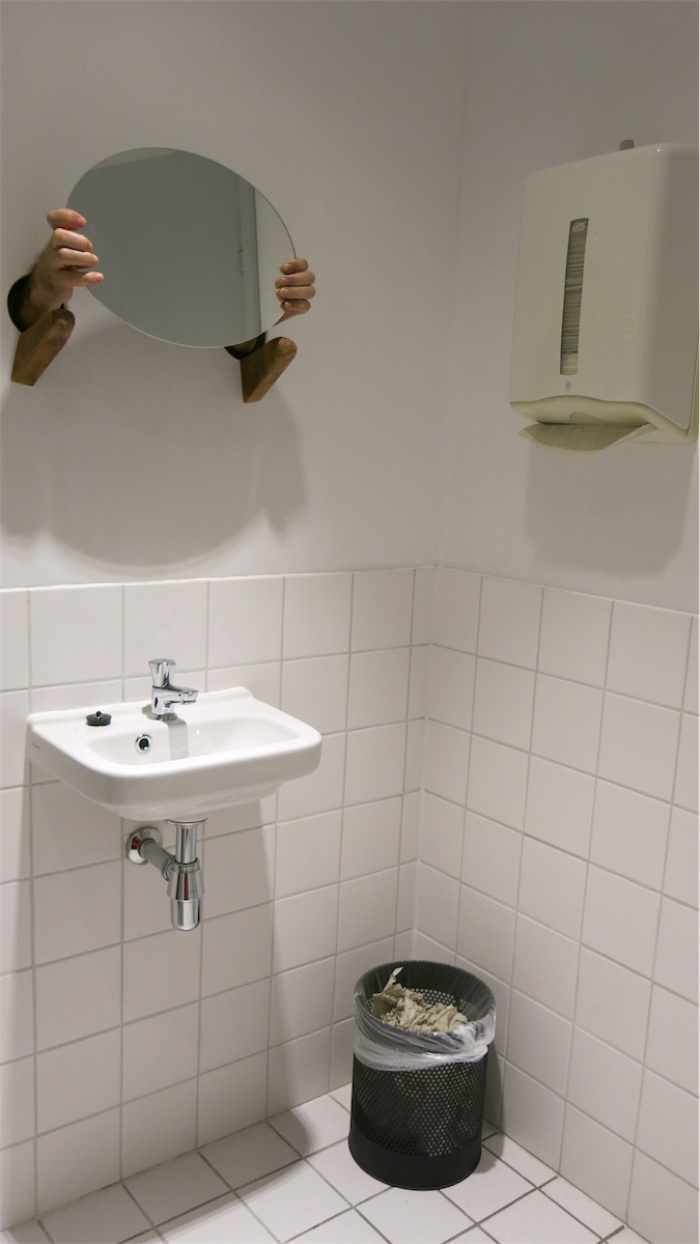
Laura Lima, Toilet. Dzięki uprzejmości artystki
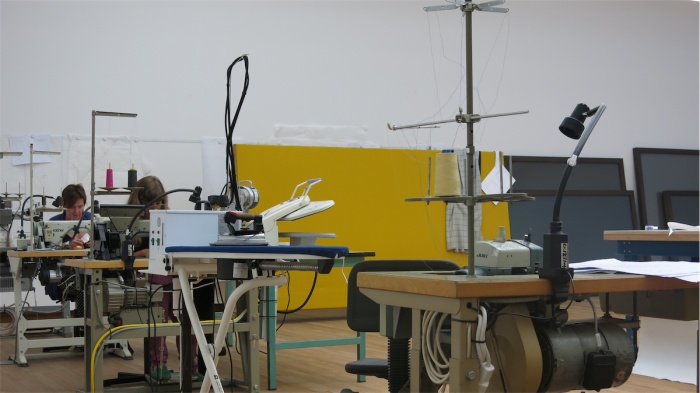
Laura Lima, Taylor shop. Dzięki uprzejmości artystki
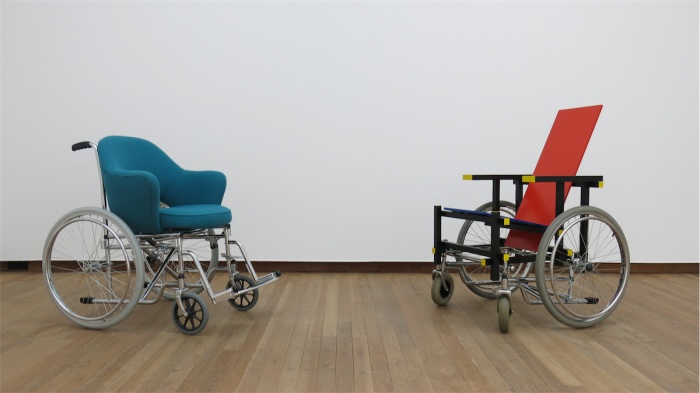
Laura Lima, Wheelchairs, 2011/2013-14. Dzięki uprzejmości artystki
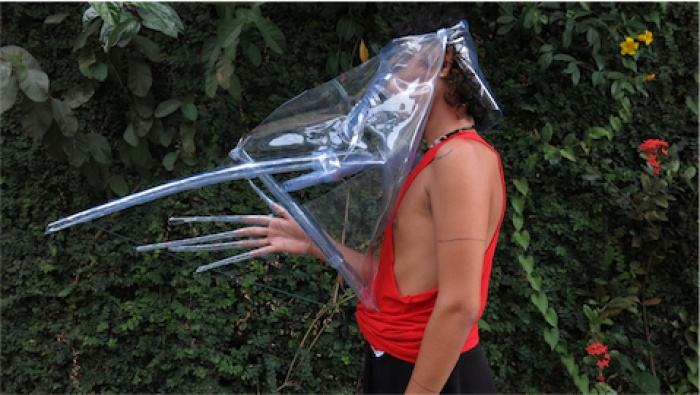
Laura Lima, New costumes. Dzięki uprzejmości artystki

Laura Lima, The naked magician. Bonniers Konsthall, 2014. Zdjęcie: Per Kristiansen. Dzięki uprzejmości artystki
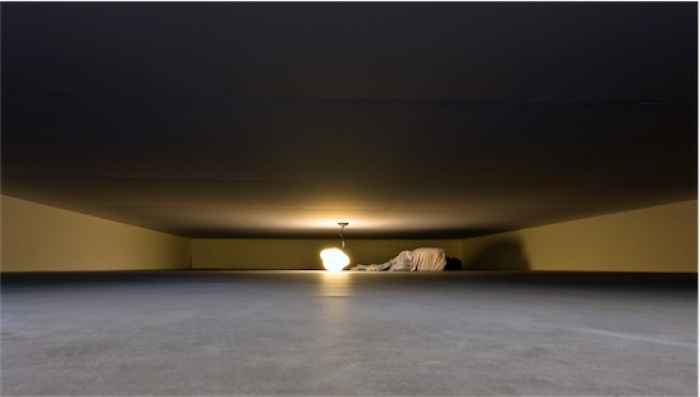
Laura Lima, Flat. Dzięki uprzejmości artystki
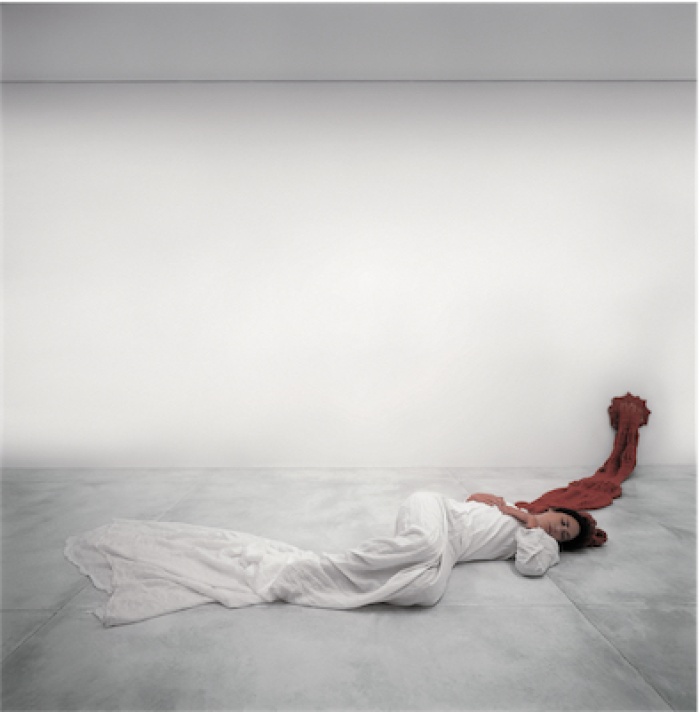
Laura Lima, Dopada. Dzięki uprzejmości artystki
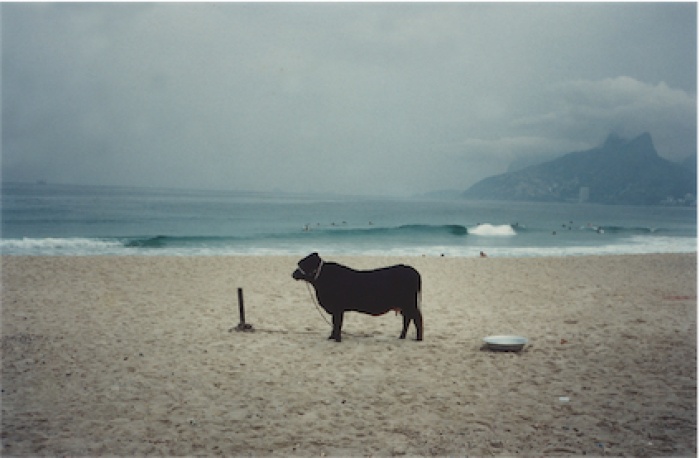
Laura Lima, Vaca. Za uprzejmością artystki
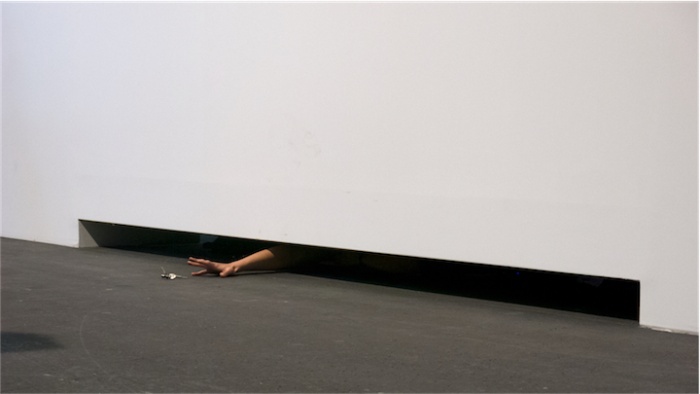
Laura Lima, Ascenseur. Dzięki uprzejmości artystki
AS: Bringing the cow to the beach and letting it just be there questions the very classic idea of performance art - active presence and doing. As I understand the “Cow” piece was about being, not doing.
LL: Since the beginning of my artistic practice, I decided not to define the work as “performance.” Mainly because, at the time, I was interested in the way that we use the language to describe the work. I liked the idea of creating a certain glossary about my own work. And these definitions are not static, but those are ways of activating the works. A sort of verbal trigger mechanisms. I realized at that time that it would take years for people to understand my practice, and the way that I was describing it; trying to talk about living beings as a material - as a method to construct the art work. So, the way that I was going to solve that was with a glossary and the conceptual structures of all those works.
I was also aware that what I was approaching was completely different from the traditional idea of performativity. At that time, I had to stop and think about it a lot. I was bothered by this idea that a performance necessarily involved the presence of the artist. And to counter the subjectivity implicit in the presence of the artist I offered carnality. Flesh as matter for a piece. I could construct an image which happened to use living beings as one of many materials. It would be flesh and rope and building and jelly and landscape. All these things were just materials, flesh, carnality. No subjectivity. Let’s take the example of the cow: the cow itself in the beach, the landscape, everything that is related, even the displacement of the animal from the mountains to an urban beach. All these things are flesh, materiality. If we use the normal vocabulary of art, this piece could be considered more as a sculpture or an installation. But I refused (and still do) to use these categories. It is a productive sort of refusal because by refusing to use them I had to stop and understand exactly what it was that I was doing, because I was not trying to bring the subjectivity of someone who was doing my work - even my own. I felt that I had to distance myself from Brazilian artists such as Lygia Clark or Helio Oiticica who were working in the 60s in a political climate that was completely different. They were living under a dictatorship in Brazil. I believe that if I was an artist in the sixties I would probably have done the same thing; create this kind of subjectivity that deals with the political moment. A sort of healing of the political body. I was much more interested in trying to bring a possibility of talking about all the materials treated as being on the same level.
AS: We can talk about parallel narratives that were shaping art in Brazil, the U.S.A and even Poland in the 60s and 70s. I’m talking about local attempts to re-think what is an art object and its relation to the viewer. In Brazil, there was the Neo-Concrete Movement with such artists as Lygia Clark, Hélio Oiticica or Lygia Pape who are bringing the idea of participatory art and socially engaged art. In the States, at that time we had the minimalism art of Robert Morris, Donald Judd and Dan Flavin who noticed that a piece is not complete without the beholder and that the movement of the viewer in the exhibition space can be a seen as a kind of a choreography. On the other hand in Poland we had Oskar Hansen who used to say that we should not walk around sculpture but enter the sculpture.
LL: My work could only have appeared because of the other art practices that have come before mine. It benefits from ways of thinking about the art object, the spectator and the relationship between art and society which was present in Brazilian Neo-Concrete Art. The other thing that I brought in the nineties, as part of my practice, was that the work should be ongoing the whole time the exhibition was open. It was the logical thing to do given the way I was approaching the idea of materiality. I couldn’t do a piece that happened from 7pm to 9pm during the opening. Many times, people have suggested this to me – and it is still very normal to work this way. My colleagues did this in the past that’s why they have created participatory pieces or included a choreographic way of thinking.
AS: Does it mean then that your practice was developed against the disappearance of the performative situation?
LL: Not quite. The fragility of disappearance is always there. Even with the work in a durational situation. I resist calling my pieces “performance” because for me it’s honest when I say that they are about the materiality - like marble or any other sculptural material, or even like a photograph hanging on the wall in the exhibition space. I used to say that this is about carnality: “Look at the carnality of things. The flesh that constructs different things.” However, when I’m working with human beings I’m also talking about what they need.
AS: You work with a very extended notion of time. The structure of your exhibitions often challenges the institution as a system and its way of functioning.
LL: Yes, but if you say that you’re working with human beings it necessarily means that you’re working with time. It’s a very fragile material. Sometimes when people ask if I want to talk about the idea of the body, then I answer that I’m not only talking about the body but about time as well. As my piece is not only takes two or three hours as performance normally does, it challenges not only the viewer but mainly the institution. Along with the participant, the institution needs to take care of the exhibition – not for one day but for three months. The institution has to face the way they’re going to deal with the piece. For example, in some pieces I work with some secrets which are known only to the institution. The public doesn’t know and it’s part of the poetics of that certain piece. With time, I’ve come to realize that the difficulties are the effects of the institution dealing with flesh and time as a material, and this has been very interesting to watch over the years because the problems that arise change. Sometimes practical problems are the symptoms of structural and conceptual problems.
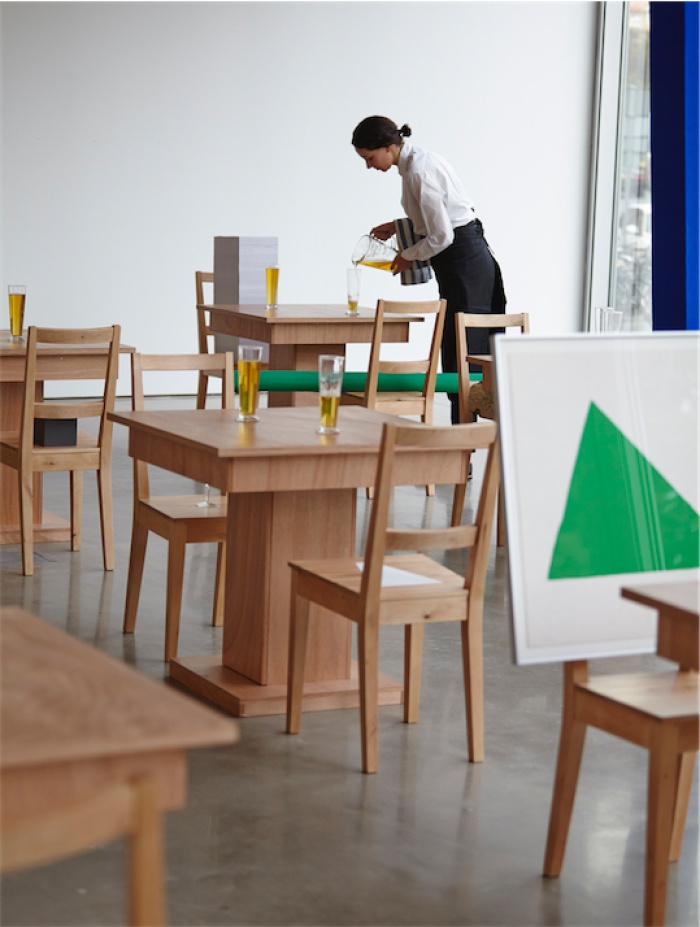
Laura Lima, Bar restaurant. Bonniers Konsthall 2014. Zdjęcie: Per Kristiansen. Dzięki uprzejmości artystki
AS: In the Bar Restaurant piece there are around 20 objects “sitting” by the table and “drinking” beer which is continuously refilled by the waiter. We can say that objects here replace people. If there is a flesh=person is there then also a flesh=object in your glossary?
LL: Live object? No, in fact, I would never use this expression. Of course, if we say this is matter, we’re talking about the objects. In Portuguese, we say reification - reificação- to address objectification (the word comes from “res” in Latin that means thing, and in Spanish “res” means cow). However, for me objectification, even if I can have a real object in my pieces, brings up a different discussion. If you talk about the object, immediately you can recognize an object.
One thing that was part of the glossary when I started, was Man=flesh/Woman=flesh but if I was straight calling someone who was doing my work I said “flesh=person.” That’s very important. When you define things, you have to consider the paradox implicit in the materiality you’re dealing with. So that’s why I know that if I’m dealing with living beings and depending on a person who is doing my piece, the piece will change each time – for example when I’m working with an old person or a child. So, I say flesh=person. And if you think about it, flesh=person is a complete paradox in relation to what I first said about my pieces.
AS: How do you work with the people who appear in your exhibitions?
LL: I always like to work with the people who I find in the place where I’m working. I never bring someone with whom I’ve worked before. It could happen only in a piece that would be about working with that certain person. Maybe one day it will happen, but so far, this has not been the situation.
Everyone who takes part in my pieces can leave the piece whenever they want. I talk about this when we meet and I present them the idea of the piece and they have to be comfortable with it somehow, their shape within the piece. I’m not talking about the exhaustion in my art practice, for example.
AS: What does it mean that you don’t rehearse?
LL: I’m interested in how my works change within time as well, which is why I let some elements come back in new exhibitions. I try not to control my pieces too much and give them space, I surprise myself and am open to what the pieces are speaking to me in a new constellation. That’s also why I would never want to rehearse, before or now. I think to have a rehearsal would mean to control the movement of the flesh=person that is taking part in my pieces. Like any other material - like a piece of fabric. So, I realized that I didn’t want to have a rehearsal because I didn’t want this to be similar to choreography traditional practice or theater, to explain it in a simple way: I didn’t want to control movements in those terms.
I talk with the participants about the concept that I’m bringing to the piece and tell them that they should come everyday to the museum or to find a way they can participate and switch with other participants. I talk about the materiality of the piece and about what I consider to be the subject of the piece. This conversation is crucial for me. It’s about creating a kind of an ethic between me as an artist (or if it was not me it’s an institution which will deal with my piece) and participants who, being flesh=persons, have to commit to the piece. They have to understand what the piece is about and decide for themselves if they want to participate and take responsibility for it. After the opening, they are responsible for maintaining the piece. That’s why it’s very important that there is an individual decision to participate. People have different motivations when they decide to participate in my pieces. Each person brings their own motivation. Some decide to do it because they need money, some because it’s an interesting experience, some because they are interested in my practice. That’s why I prefer to say to participants: “You’ll understand what you are doing when you are doing it.” Now we have an agreement that we start with the first hour of the exhibition and that image that we construct will be balanced during the whole exhibition and each participant will find their own way to make the piece. Depending on the idea of the piece I also have to deal with different problems to solve. For example, there is a piece of mine called “Marra” where I put together two men fighting. I can’t work with 6 or 8 participants. I have to deal with the institution to explain that we need lots of people as I don’t want them to fight with the same person each day. They are not going to fight then – they need, in this piece, to have a certain kind of will to fight and not to pretend. As they are going to fight I cover their heads and then they start to fight. They don’t know each other. We had to make a schedule with different combinations so that if it turns out that some people fight again it could happen for the first time after two weeks when they probably won’t remember anymore the experience of fighting with this particular person. If I have people taking part in my pieces of course it’s an experience for them. But the piece is not talking about their experiences. Since I’m talking about materiality, I need to make it clear that I’m not talking about this person’s experience. I’m not constructing subjectivity.

Laura Lima, Marra. Dzięki uprzejmości artystki
AS: And what about the experience of the viewer? Unlike Lygia Clark or Hélio Oiticica you don’t make participatory art.
LL: Although there is no denying that everything is an experience; seeing an exhibition, participating in an exhibition, all that is an exhibition, my work is not about this subjective experience. To me everything becomes leveled, equated, flesh.
AS: Over time different layers of work start to be discussed and become visible. Nowadays, after several years of a boom in performative exhibitions coming mostly from the field of choreography – for example Tino Sehgal, Boris Charmatz and Anne Imhof – the accent has moved to the issue of labor and the work of the performer in the exhibition space.
LL: When I do my pieces and I call people flesh I talk about this carnality and I put someone working there, I am also talking about labor. Of course, the subject is there somehow. You can’t say that you’re not seeing that. It’s evident and it’s just part of it. Santiago Sierra talks a lot about it. When he brings professions it’s obvious that he gives critics and viewers input to write or talk about it.
BIO
Laura Lima (born 1971, she lives and works in Rio de Janeiro) is one of the most recognizable Brazilian artists of her generation. Laura Lima creates situations or images in which she then places living beings – humans or animals – for the duration of the exhibition. Although Lima's projects have some performative aspects, the artist stubbornly avoids such expressions as “performance” or “installation” as there are no narrative moments, scripts, or even endings in her work. There are also no attempts or aspirations to create choreographies of movements.
Her work has been featured in individual exhibitions at such prestigious institutions as the ICA Miami (2016); Museo de Arte Moderno, Buenos Aires (2015); Bonnefantenmuseum, Maastricht (2014); Bonniers Konsthall, Stockholm (2014); Migros Museum, Zurich (2013); Performa 15, New York; Casa França Brasil, Rio de Janeiro (2011). Her works has been included in major group exhibitions, amongst others, the Lyon Biennial (2011); "14 Rooms," Fondation Beyeler, Basel (2014); Sao Paulo Biennale (1998, 2006). At the same time as the Warsaw presentation, the artist is opening an individual exhibition at the Fondazione Prada in Milan.
Cover image: Laura Lima, The Naked Magician. Photo: (c) Per Kristiansen. Bonniers Konsthall, 2014



